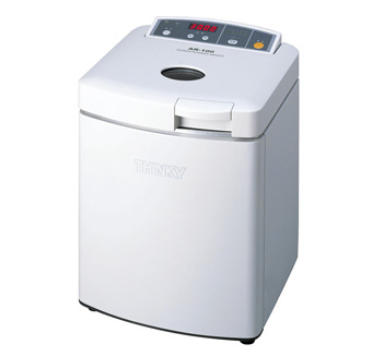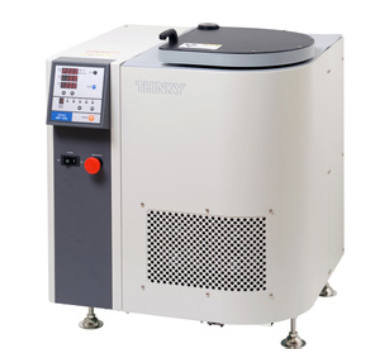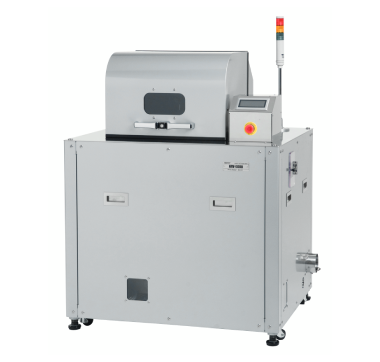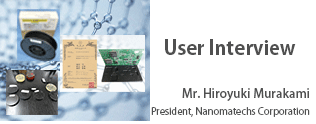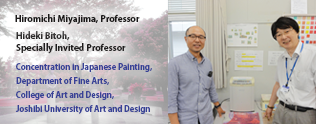Target product of interview: Rotating ultrasonic nano-premixer PR-1

Professor Nakashima, please tell me about the subjects of your research.
I have continued research on the basic properties and applications of carbon nanotubes (CNTs) since 2000. The research objective of the Nakashima Laboratory is to design a variety of molecules that solubilize CNTs and use these solutions for the functionalization of CNTs. Single-walled CNTs (SWNTs) are mixtures of metallic and semiconducting SWNTs and are characterized by various styles of winding. By solubilizing them, it is possible to separate metallic and semiconducting SWNTs from the mixtures.
As a method of solubilizing CNTs, surfactants or polymers have also been used. However, these materials are known to be difficult to remove after dispersion. On the other hand, solubilizing agents designed in the Nakashima Laboratory can easily be removed from dispersed CNTs. A variety of agents are currently being investigated for materials that can be used by many people as efficient CNT solubilizers in the future.
Please tell me about the dispersion of CNTs.
There are two types of CNTs, a multiple-wall type consisting of several or more walls (multiwall carbon nanotube; MWNT) and a single-wall type consisting of a single wall (single-wall carbon nanotube; SWNT). Although multiwall nanotubes are inexpensive, fluorescent (photoluminescence; PL) spectroscopy cannot be used for their evaluation as composite materials. On the other hand, for a SWNT, the solubilizing ability and solubilizing structure can be discussed quantitatively on the basis of its PL spectrum and absorption spectrum. Therefore, SWNTs are mainly used in basic research and MWNTs in applied research. Furthermore, their dispersion is greatly affected by the type of solubilizers. Thus, it is important to set appropriate solubilization conditions depending on the type of CNTs, etc., as well as on the type of solubilizers.
In general, CNTs with high purity have few structural defects and are difficult to disperse. 8Dispersion tends to become easier for CNTs with lower purity. Sometimes, the dispersion of CNTs with large diameter is required. Because the ease of dispersion varies depending on the purity and length of the CNT, attention must be paid to these characteristics in the dispersion process.
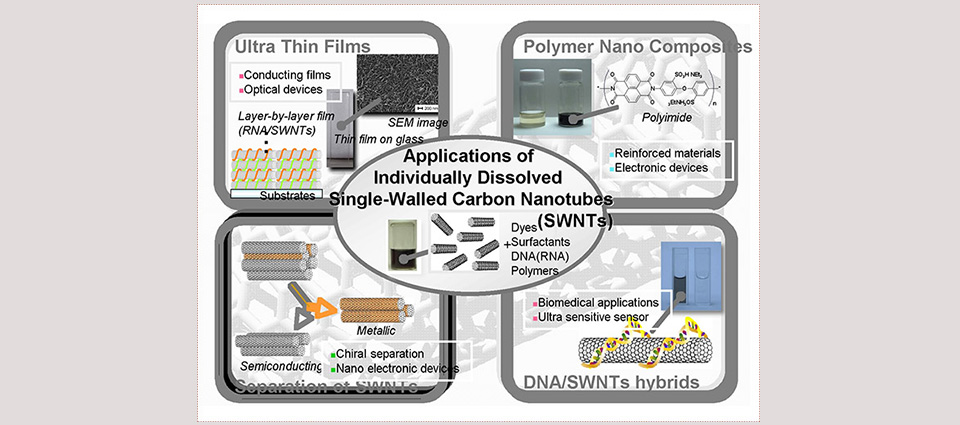
*The figure shows the world of “soluble carbon nanotubes”
Please describe the status of CNT research and application in the world.
Basic research and applied research on CNTs are very active in various countries all over the world including the USA, European countries, China, Taiwan, Korea, etc. Furthermore, after a Nobel Prize was awarded for the realization of graphene, the research on graphene and related layered nanomaterials has acquired ample funding and is now rapidly developing.
Professor Nakashima has been using Dispersion Nano-Taro PR-1, what was the deciding factor behind of the adoption of PR-1?
CNTs are usually aggregated, and if they are crushed violently with a ball mill, for example, they suffer severe damage. Similarly, probe-type ultrasonic dispersion also causes damage to CNTs. In order to disperse CNTs without damage, bath-type ultrasonic dispersion is the most desirable. In this method, the dispersion of CNTs is known to differ depending on the position of the ultrasonic transducer relative to the target (absence of quantitative accuracy).
On the other hand, when using PR-1, ultrasonic processing can be performed while rotating at the same sample position every time, leading to excellent reproducibility of dispersion. The good reproducibility of experimental results is the primary reason behind the decision to use this device. In addition, because the bath temperature can be kept below a certain specified value in this system, it is appropriate for experiments carried out under the condition of solubilization being kept the same. Ultrasonic experiments are very delicate, and experimental results can be affected by a slight change in conditions (the amount of water in the bath, for example). If the conditions are set manually, results may vary depending on the persons actually performing the experiments, leading to variations in the data obtained. In basic research, it is especially important to keep data variation as small as possible.
In the University, an ordinary bath-type ultrasonic dispersing machine is used first. If solubilization is not achieved with the bath-type machine, a probe-type ultrasonic device is used. PR-1 is used when the amount of CNT solubilization (state of the solution) has to be quantitatively discussed.

